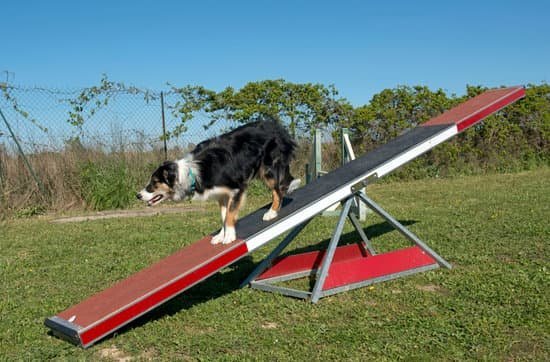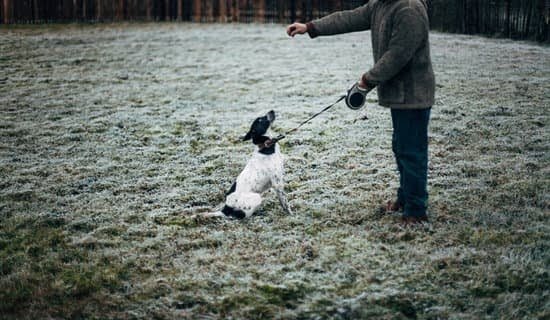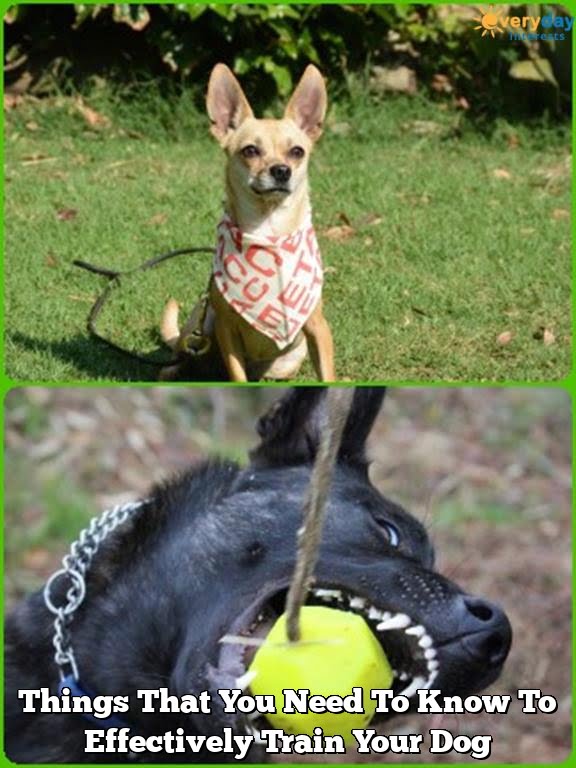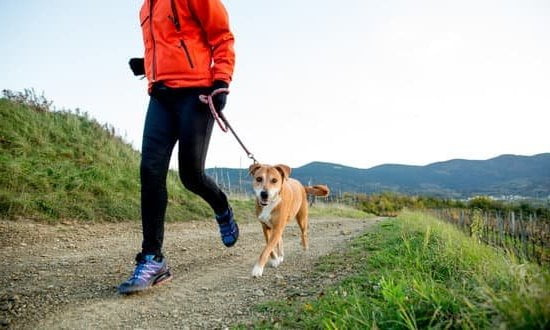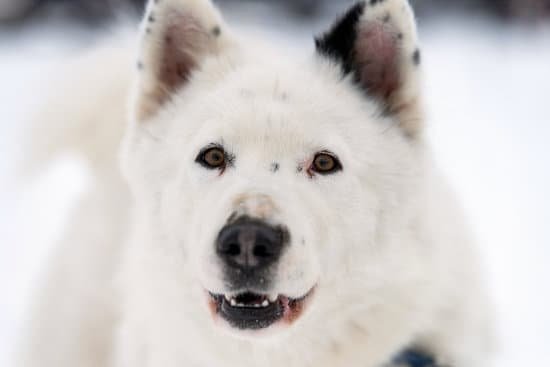Training your dog to let go of things is an essential skill that every pet owner should teach their furry companions. In this article, we will explore the reasons why it is important to teach your dog to let go and provide valuable insights into basic and advanced training techniques, as well as tips for addressing specific scenarios and troubleshooting common challenges.
Understanding the behavior of holding onto things is crucial in effectively training your dog to let go. Dogs may exhibit possessive or aggressive behaviors when they are unwilling to release objects, which can lead to potential conflicts with other pets or individuals. By comprehending the underlying reasons for this behavior, pet owners can implement appropriate training methods to address these issues.
We will delve into basic training techniques for letting go, such as using commands and positive reinforcement, as well as advanced techniques for more stubborn dogs. Furthermore, we will discuss the significance of utilizing positive reinforcement in training and how it can help in instilling good behavior in your dog. Additionally, we will provide insights on dealing with resistance or aggression during the training process.
Understanding the Behavior of Holding Onto Things
Dogs, just like humans, can become possessive over their toys, food, or other items. This behavior is instinctual and can often lead to conflicts with their owners or other animals. Understanding why dogs hold onto things can help in training them to let go when necessary.
1. Instinctual Behavior: Dogs have a natural instinct to guard and protect what they perceive as valuable resources. In the wild, this behavior ensures their survival by allowing them to keep control of their food or possessions. This instinct can transfer into the domesticated setting, causing dogs to become possessive and unwilling to let go of items.
2. Fear or Anxiety: Some dogs may hold onto objects out of fear or anxiety that they will be taken away. This can stem from previous negative experiences, such as having their belongings forcibly taken from them. Understanding the underlying emotions driving this behavior is crucial in addressing and modifying it through training.
3. Lack of Training: Many dogs simply have not been taught how to properly relinquish objects on command. Without proper training, they may not understand when it is appropriate to let go of something. Implementing consistent and effective training techniques can help address this issue.
Understanding these underlying reasons behind a dog’s tendency to hold onto things is essential in successfully training them to let go when necessary.
By understanding this behavior, we now need explore how we should be going about training our dogs_correctly teach your dog how_to train your dog to let go of things for a more obedient pet_companion.
Basic Training Techniques for Letting Go
Teaching your dog to let go of things is an essential part of their training and can prevent a range of unwanted behaviors such as resource guarding or possessiveness. It not only ensures their safety but also the safety of others around them. Here are some basic training techniques for letting go:
- Start with a high-value item: Begin by offering your dog a toy or treat that they are particularly fond of. This will help to grab their attention and make the training more effective.
- Use the “drop it” command: Hold the item in front of your dog and say “drop it” in a clear, firm voice. If your dog releases the item, reward them with a treat and praise.
- Trade for a better item: If your dog is reluctant to let go, offer them an even better treat or toy in exchange. This will help them understand that letting go doesn’t mean losing out.
Once your dog consistently responds to the basic training techniques, you can move on to more advanced methods that reinforce this behavior further. Remember to be patient and consistent in your training approach, as it may take time for some dogs to fully grasp this concept.
Remember, consistency is key when it comes to training any behavior in your dog. By practicing these techniques regularly and rewarding positive behavior, you can ensure that your dog learns how to let go of things in various scenarios. With patience and persistence, you’ll see improvement over time on how to train your dog to let go of things.
Advanced Training Techniques for Letting Go
Once your dog has mastered the basic training techniques for letting go of objects, you may want to consider advanced training techniques to reinforce this behavior and make it more reliable in various situations. One advanced technique is teaching your dog to “drop it” on command, which can be useful in real-life scenarios where your dog is holding onto something they shouldn’t have.
To train your dog to let go on command, start by offering them a high-value treat in exchange for the object they are holding. When they release the object, immediately reward them with the treat and praise. Repeat this process until your dog consistently lets go of the object when prompted. Gradually phase out the treats and rely more on verbal praise as your dog becomes more reliable in responding to the command.
Another advanced technique is desensitizing your dog to triggers that cause them to hold onto objects out of fear or possessiveness. This could involve exposing your dog to different stimuli while working on the “let go” command, gradually increasing their tolerance levels and helping them feel less threatened or possessive in those situations.
It’s important to remember that advanced training techniques require patience, consistency, and positive reinforcement. Always be mindful of your dog’s body language and behavior during training sessions, and adjust your approach as needed to ensure a positive learning experience for both you and your pet.
| Advanced Training Techniques | Benefits |
|---|---|
| Teaching “drop it” command | Useful in real-life scenarios |
| Desensitizing to triggers | Reduce fear or possessiveness |
Utilizing Positive Reinforcement in Training
When it comes to training your dog to let go of things, positive reinforcement is an effective and gentle approach that can yield great results. By using positive reinforcement techniques, you can encourage your dog to willingly release items without resorting to force or intimidation. This approach also strengthens the bond between you and your furry companion while promoting a cooperative attitude.
Using Treats as Rewards
One of the most popular methods of positive reinforcement is using treats as rewards for desired behavior. When teaching your dog to let go of objects, offer a tasty treat as soon as they release the item on command. This creates a positive association with letting go and motivates your dog to comply with the command in the future.
Verbal and Physical Affirmations
In addition to treats, verbal praise and physical affection can also be powerful tools for reinforcing good behavior. When your dog releases an object, make sure to enthusiastically praise them with phrases like “good boy/girl” or “well done.” You can also show affection through gentle petting or belly rubs, which further reinforces the idea that letting go leads to positive outcomes.
Consistency Is Key
Regardless of which positive reinforcement techniques you choose to use, it’s crucial to be consistent in your approach. This means offering rewards and affirmations every time your dog lets go of something as well as maintaining a clear and predictable training routine. Consistency helps solidify the connection between letting go and rewards, making it easier for your dog to understand and comply with the command over time.
Incorporating positive reinforcement into your training regimen not only makes the process more enjoyable for both you and your dog but also encourages a more willing and cooperative attitude when it comes to letting go of things. Remember that patience and consistency are key components of successful training – keep practicing these techniques regularly for continual improvement in your dog’s behavior.
Dealing With Resistance or Aggression
Understanding Resistance and Aggression
Some dogs may exhibit resistance or aggression when it comes to letting go of items. This behavior can manifest in different ways, such as growling, snarling, or even snapping at the owner. It is important to understand that this behavior is often driven by possessiveness or a fear of losing control over the object.
It can also be a result of previous reinforcement of this behavior. Recognizing the underlying reasons for resistance and aggression is crucial in addressing and modifying this behavior.
Techniques for Dealing With Resistance
When your dog shows resistance or aggression towards letting go of an item, it is important to remain calm and composed. Avoid engaging in a tug-of-war battle with your dog, as this can escalate the situation. Instead, you can try offering a high-value treat as a trade for the item your dog is holding onto.
Use a firm but gentle tone to command “drop it” or “let go” and wait for your dog to comply. If your dog releases the item, be sure to reward them immediately with praise and the treat.
Addressing Aggression
If your dog displays aggressive behavior when asked to let go of something, it may be best to seek professional help from a certified dog trainer or animal behaviorist. They can assess the underlying causes of the aggression and provide specific techniques tailored to your dog’s behavior.
In some cases, desensitization exercises or counter-conditioning may be necessary to modify this response. Remember that safety is paramount when dealing with an aggressive dog, so always prioritize seeking professional guidance if needed.
Addressing Specific Scenarios (Eg Toy, Food, or Other Objects)
When training your dog to let go of things, it’s important to address specific scenarios such as toys, food, or other objects. Each scenario may require a different approach and understanding your dog’s behavior in each situation is crucial for successful training.
For example, when training your dog to let go of a toy, it’s important to make sure they understand the “drop it” command. This can be achieved through basic training techniques such as offering a treat in exchange for the toy and positively reinforcing the behavior when they release the object. Understanding the value of the toy to your dog can also help you gauge their behavior and modify your training techniques accordingly.
Similarly, when it comes to food or other objects, it’s essential to establish boundaries and use consistent commands. Using positive reinforcement and patience is key in these scenarios as well. Additionally, understanding any potential triggers for possessive behavior can help you address them more effectively during training.
Here are some effective ways on how to train your dog to let go of things:
Use Treats as Positive Reinforcement
Establish Boundaries and Consistently Use Commands
Understand the Triggers for Possessive Behavior
Modify Training Techniques Based on the Value of the Object
| Training Techniques | Effective Methods |
|---|---|
| Use of treats | Positive reinforcement |
| Establishing Boundaries | Consistency in commands |
| Understanding Triggers | Modify based on object value |
Troubleshooting Common Challenges in Training
Training your dog to let go of things can be a challenging process, and it’s common for pet owners to encounter difficulties along the way. One of the most common challenges is dealing with a dog’s reluctance to release an item, particularly when it comes to prized possessions such as toys or food. When faced with this issue, it’s important to approach the training process with patience and perseverance.
If your dog is struggling to let go of objects, it may be helpful to revisit the basic training techniques for letting go. This could involve practicing the “drop it” command in a controlled environment, using high-value treats or rewards as an incentive for compliance. Additionally, you can also incorporate interactive play as a means of encouraging your dog to release items willingly.
Another common challenge in training dogs to let go of things is addressing resistance or aggression. Some dogs may exhibit possessive behavior over certain items, leading to confrontations when attempting to retrieve them. In these instances, it’s crucial for pet owners to prioritize safety and seek professional guidance if necessary. Through consistent training and positive reinforcement, dogs can learn how to relinquish items without displaying aggressive behavior.
Consistency and continual improvement are key elements in overcoming challenges when teaching a dog to let go of things. By reinforcing positive behaviors and addressing issues as they arise, pet owners can effectively train their dogs to release items on command. It’s essential to remain patient and persistent throughout this process, while also seeking support from experienced trainers or behaviorists if needed.
Tips for Consistency and Continual Improvement
In conclusion, teaching your dog to let go of things is a fundamental aspect of their training and development. As outlined in this article, understanding the behavior behind holding onto items and implementing basic and advanced training techniques are crucial for success. Utilizing positive reinforcement, addressing resistance or aggression, and troubleshooting common challenges are also important strategies for effective training.
Consistency and continual improvement play a key role in the training process. Consistently practicing commands and reinforcing good behavior will help your dog understand what is expected of them. Similarly, continually finding new ways to challenge and engage your dog will keep their training fresh and effective. By following these tips and remaining patient, you can help your dog become more obedient when it comes to letting go of objects.
Ultimately, training your dog to let go of things takes time, effort, and patience. Every dog is different, so it may take some trial and error to find the right approach that works for your pet. However, with dedication and a positive attitude, you can successfully teach your furry friend how to let go of objects when asked to do so.
Frequently Asked Questions
How Do I Teach My Dog to Let Go of Something?
Teaching a dog to let go of something can be done through positive reinforcement and consistency. Start by trading the item for a treat, then use the “drop it” command and reward them when they release the object.
How Do You Teach a Dog to Release Commands?
Teaching a dog to follow release commands involves using repetition and positive reinforcement. Start by giving the command “release” or “drop it” while gently encouraging them to let go of the item. Then reward them when they comply.
How Do You Teach Drop It and Leave It?
Teaching a dog to “drop it” and “leave it” requires patience and consistent training. Begin with teaching the “drop it” command, rewarding them for releasing objects on cue. Then move on to teaching the “leave it” command, rewarding them for ignoring items altogether.

Welcome to the blog! I am a professional dog trainer and have been working with dogs for many years. In this blog, I will be discussing various topics related to dog training, including tips, tricks, and advice. I hope you find this information helpful and informative. Thanks for reading!

